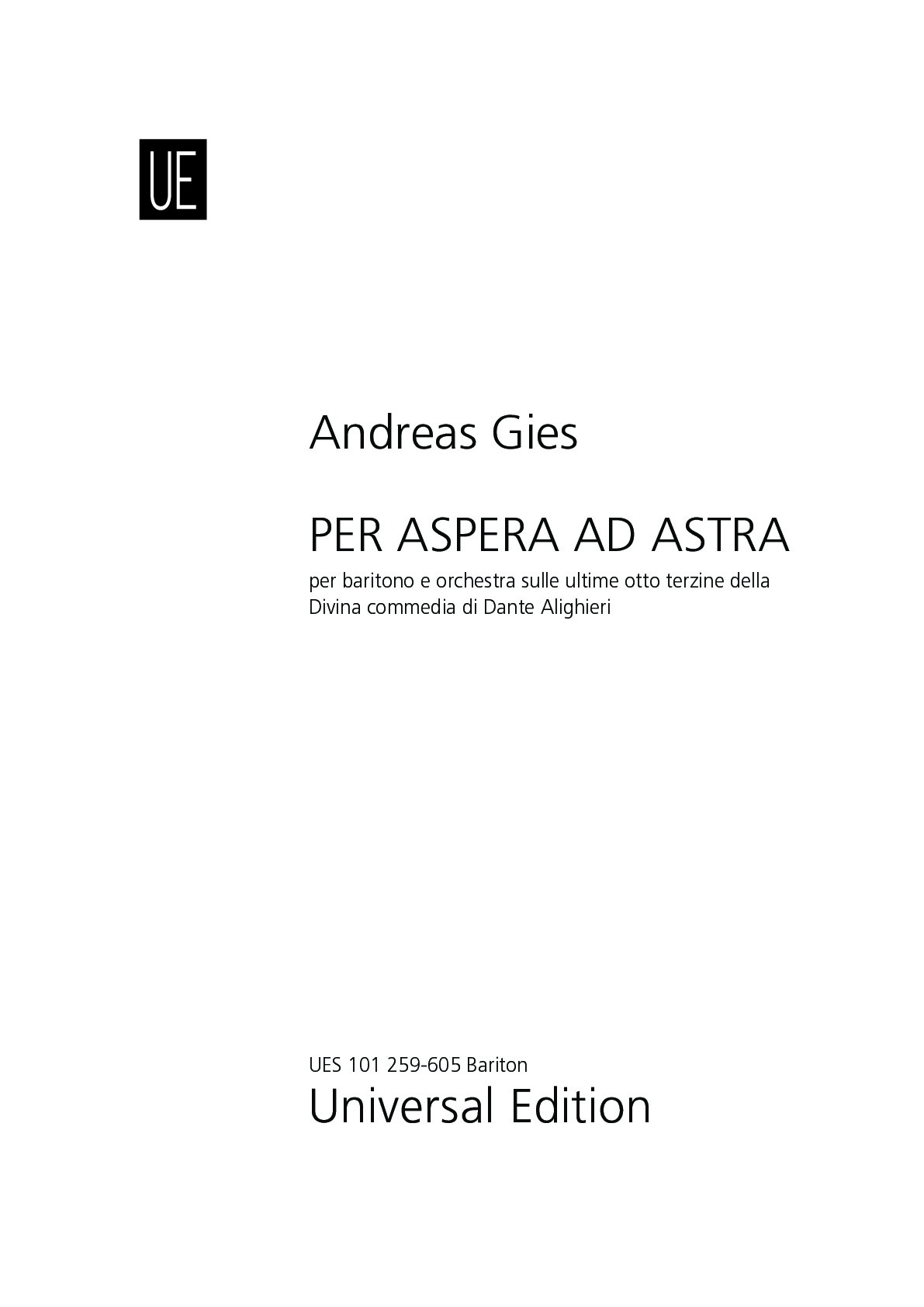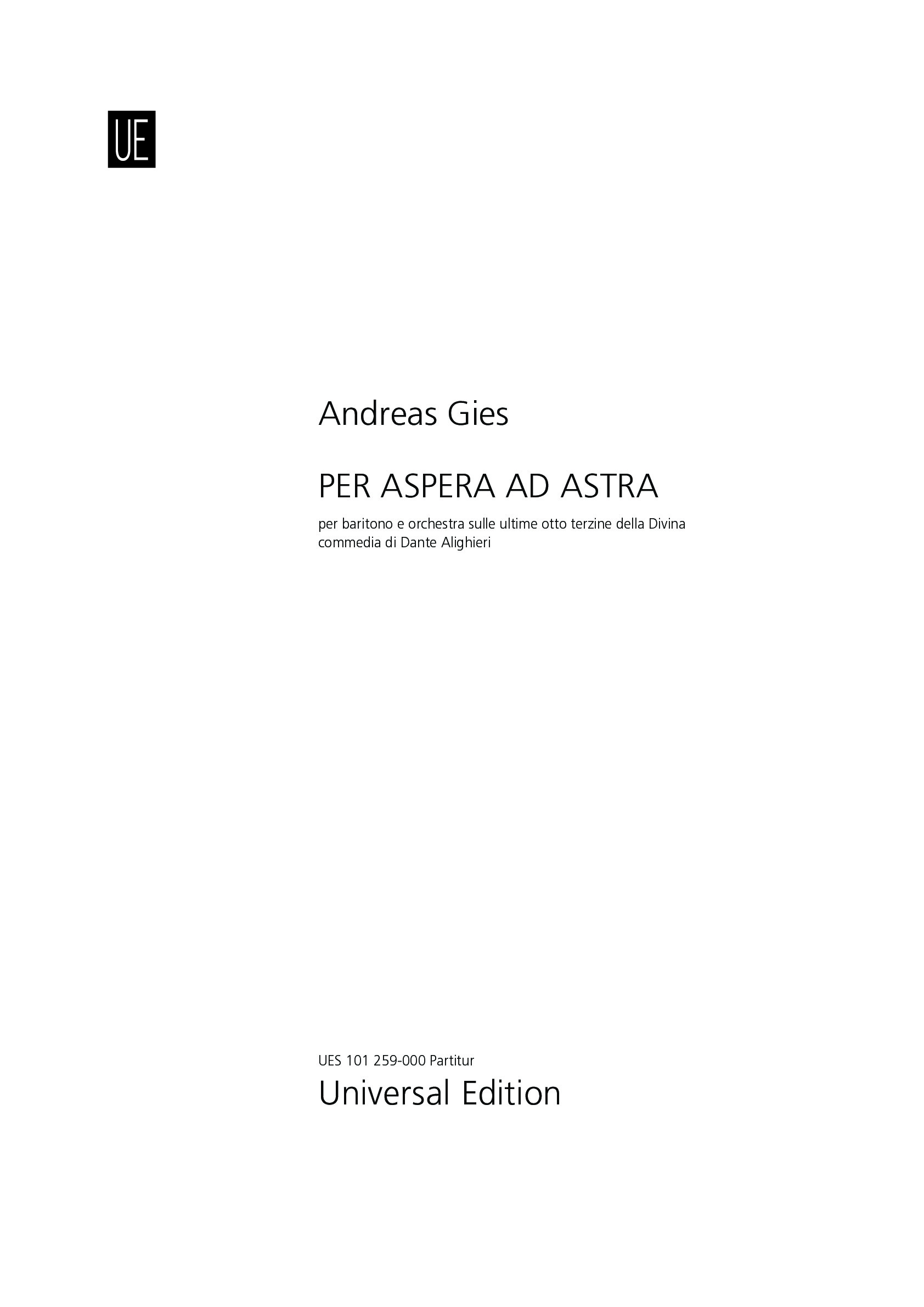

Andreas Gies
PER ASPERA AD ASTRA
Short instrumentation: 2 2 2 2 - 2 2 0 0, timp, perc(2), hp, cel, str
Duration: 15'
Solos:
baritone
Instrumentation details:
1st flute
2nd flute (+picc)
1st oboe
2nd oboe (+c.a)
1st clarinet in Bb
2nd clarinet in Bb (+bass cl(Bb))
1st bassoon
2nd bassoon
1st horn in F
2nd horn in F
1st trumpet in Bb
2nd trumpet in Bb
timpani
bass drum (+s.d)
tam-tam (+cym)
celesta
harp
violin I (10 players)
violin II (8 players)
viola (6 players)
violoncello (5 players)
double bass (3 players)
PER ASPERA AD ASTRA
Work introduction
The piece is ideally divided in 3, each part trying to depict the impressions after the reading of the related "cantica dantesca". From an initial "chaos" of the elements and the multitude of the people filling the infernal place there is a more lyric-elegiac movement, similar to a slow procession of the souls yearning for salvation and light (Purgatorio) to end with a vision of the Paradiso helped with the voice of a Baritone. The text used (the last stanzas of the entire poem) is not yet sung but recited at first, until the sound of the word becomes real musical sound. The path is indeed not linear and research for harmony (both in a mystical sense and musical) passes through the difficulty of leaving the material world for the disembodied light reign.


